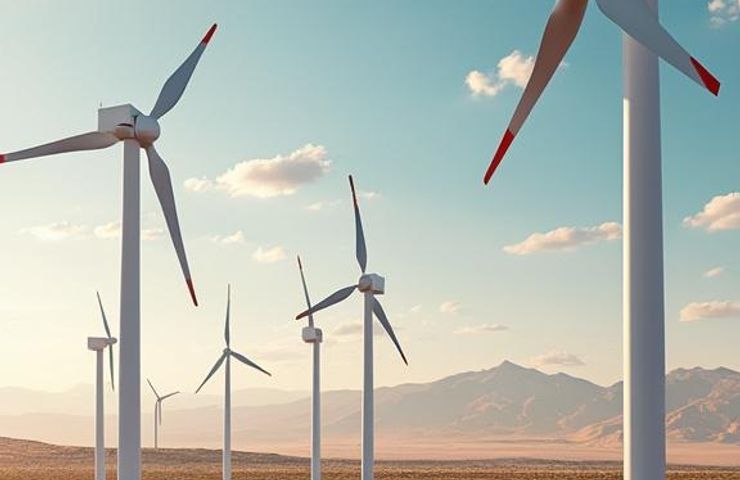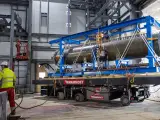
EU Backs Green Hydrogen Production in Namibia’s Energy Transition
August 5, 2025Ever wonder how Namibia, a country long known for diamonds and mining, has stormed into the limelight for green hydrogen? In 2025, the European Union ramped up support for Namibia’s Green Hydrogen Programme, hoping to catapult the country into a renewable energy juggernaut. This dynamic partnership combines hands-on technical expertise, grant funding, and smart finance tools to de-risk private investors and kickstart a billion-dollar green hydrogen ecosystem.
It’s a savvy move: the EU advances its decarbonisation goals and energy diversification, while Namibia shifts gears from raw resource exports to high-value industries. Backed by blazing solar irradiance in its Southern Valley and steady coastal winds near the Skeleton Coast, Namibia is primed for mega-scale green hydrogen facilities that could power a sustainable energy revolution.
From Diamonds to Decarbonisation: Namibia’s Green Makeover
For decades, Namibia’s identity was tied to diamonds and other minerals. Today, it’s rewriting that narrative. The semi-arid Southern Valley boasts some of the world’s sunniest skies, and the coastal breezes don’t disappoint either—perfect ingredients for cutting-edge electrolysis. Government roadmaps like the 2024 Blueprint for Green Industrialisation and the Namibia Green Hydrogen and Derivatives Strategy lay out clear steps for scaling up production. Since 2022, a string of policies has formalised this ambition, positioning Namibia as a key player in Africa’s energy transition.
With under 2.6 million people and an upper-middle-income status (GNI per capita around US$5,378), Namibia’s aiming beyond commodity exports to build a thriving green industrial base. Early pilot projects backed by the United Nations tested different electrolyser setups, igniting interest from both local entrepreneurs and international investors keen on industrial decarbonization.
The EU’s Two-Pronged Support: Tech & Finance
At the heart of this partnership lie two pillars: hands-on technical support and clever, blended financing. Over the next few years, EU experts in policy, regulation and project management will work side-by-side with the Environmental Investment Fund of Namibia (EIF) and the Namibia Green Hydrogen Programme (NGH2P). They’ll help draft regulations, run grid-integration studies and host capacity-building workshops for government officials, engineers and local stakeholders. Meanwhile, grant funding will shore up feasibility studies, community outreach and environmental assessments to ensure a solid footing.
On the financing front, the Netherlands and several other EU member states have pledged N$258 million to the SDG Namibia One Fund, managed by Nam-H2 Fund Managers (a JV of EIF, CFM and Invest International). This blended finance vehicle is designed to lure private equity, offer concessional debt and catalyse around US$1 billion of investment into hydrogen infrastructure projects.
Making Electrolysis Work at Scale
Let’s talk about the star of the show: the electrolyser. This gadget splits water into hydrogen and oxygen using renewable electricity, and when you pair it with sprawling solar parks in the Southern Valley and coastal wind farms, the results are impressive. “It’s about finding the sweet spot between peak solar output, grid stability and wind generation,” says a project lead at NGH2P. “Battery storage helps bridge the gaps, so we keep those electrolysers humming.”
The HyIron-Oshivela Project takes this a step further by co-locating hydrogen production with downstream iron processing. By creating a homegrown green steel value chain, they’re slashing transport costs, generating local jobs, and transferring skills—turning Namibia’s raw potential into tangible economic gains.
Blended Finance: The Game Changer
Getting big-ticket projects off the ground is never easy, but blended finance is the secret sauce. Public grants and concessional loans absorb early-stage risks, while private investors enjoy more predictable returns. A proposed €500 million concessional loan from the European Investment Bank (EIB) would anchor infrastructure spending—from pipelines and storage tanks to port upgrades—supercharging exports. Meanwhile, the United Nations chips in with grant-funded pilots and risk guarantees to sweeten the deal.
“Investors need clarity on offtake agreements, pricing models and regulatory frameworks,” says a fund manager at Nam-H2. “Blended finance, paired with fiscal perks like VAT exemptions and flexible currency rules, helps close the funding gap.”
Building Beyond Hydrogen: Corridors & Communities
Namibia isn’t stopping at hydrogen. The blueprint includes new industrial corridors connecting production hubs to coastal ports, green transport networks for fuel-cell heavy-duty vehicles, and ammonia-cracking facilities aimed at regional markets. This holistic plan could transform Namibia into a renewable energy export hub—supplying Europe and neighboring countries with clean ammonia and other low-carbon solutions.
By anchoring downstream sectors—from green steel to sustainable agro-processing—the programme exemplifies how industrial decarbonization can dovetail with national development goals, creating jobs and boosting local economies.
Safeguards, Regulations & Skills
No mega-project is risk-free. Water use, land impact and biodiversity concerns all require robust environmental, health and social impact assessments. NGH2P has adopted international best practices, with ongoing community consultations—especially in rural areas of the Southern Valley—to ensure local voices are heard.
Policy shifts are another worry. To lock in stability, the EU and Namibian authorities are drafting transparent, long-term legal frameworks covering hydrogen pricing, offtake guarantees and competitive tender processes.
And perhaps most importantly, upskilling local talent is baked into the strategy. Training programs led by EIF and backed by EU technical assistance will equip Namibians—from plant operators to maintenance engineers—with the know-how to run and sustain this green revolution.
The Path Forward
As 2025 rolls on, Namibia’s green hydrogen dream is shifting from policy papers to shovels in the ground. Finalizing the EIB loan, maintaining donor momentum and keeping the private sector engaged will determine if this vision becomes a repeatable blueprint across Africa. One thing’s clear: by marrying sustainable energy ambitions with smart finance and strong governance, Namibia and the EU are charting a course toward a low-carbon future that transcends mere buzzwords.
For anyone tracking the global green hydrogen scene, this story is one to watch. It knits together large-scale electrolysis projects, downstream industrial growth and community-first investments—a winning mix that could redefine how emerging markets plug into the global hydrogen economy. Expect ripple effects across southern Africa as other nations eye this model for their own energy and industrial transformations.



 With over 15 years of reporting hydrogen news, we are your premier source for the latest updates and insights in hydrogen and renewable energy.
With over 15 years of reporting hydrogen news, we are your premier source for the latest updates and insights in hydrogen and renewable energy.